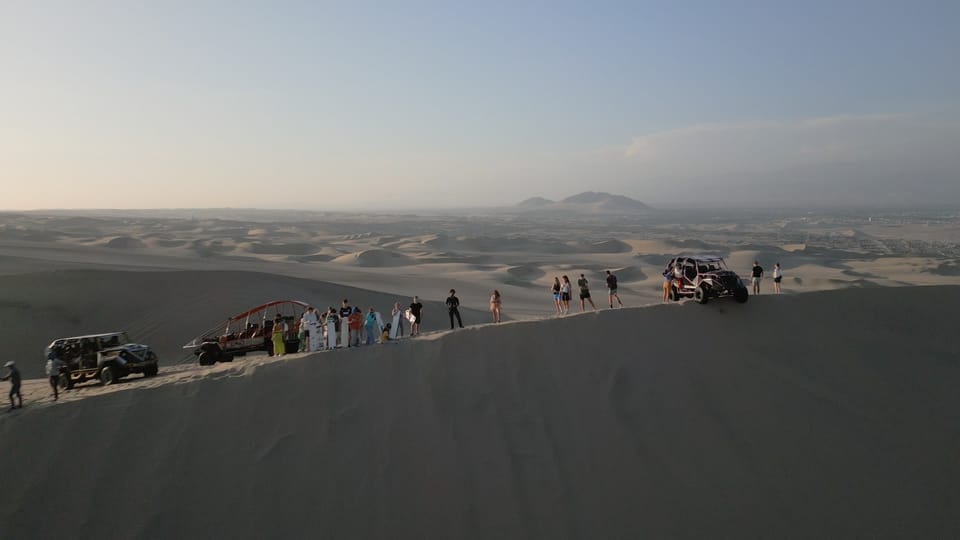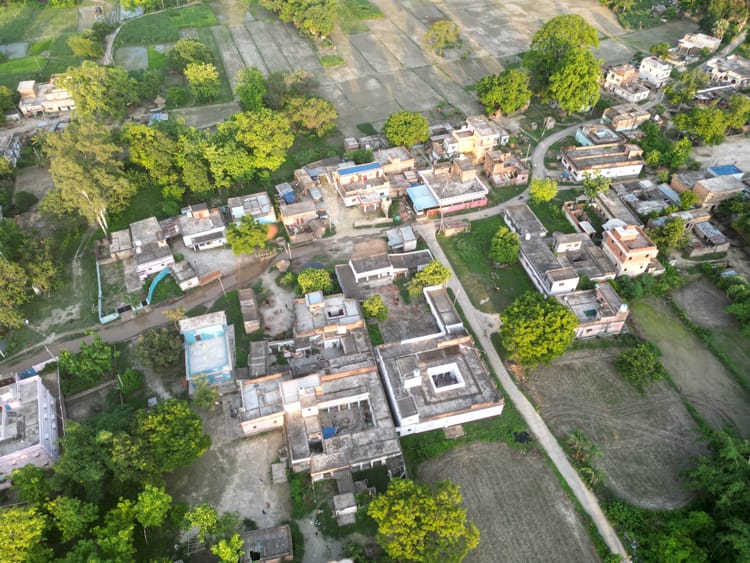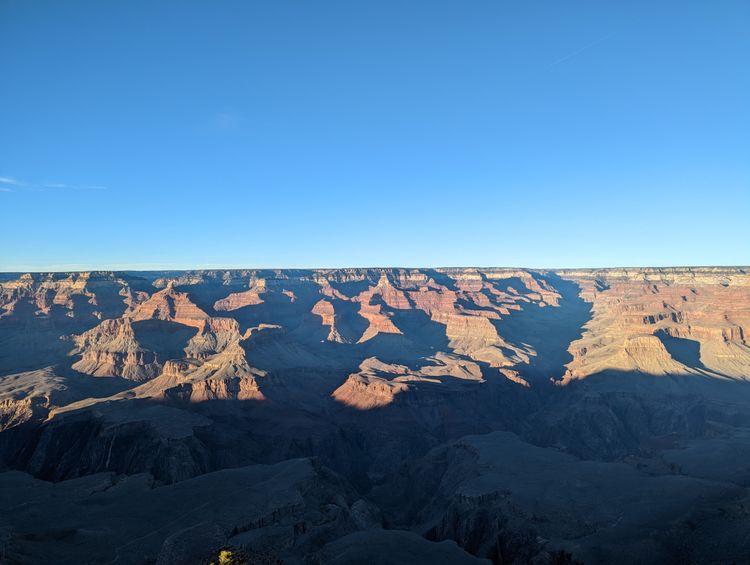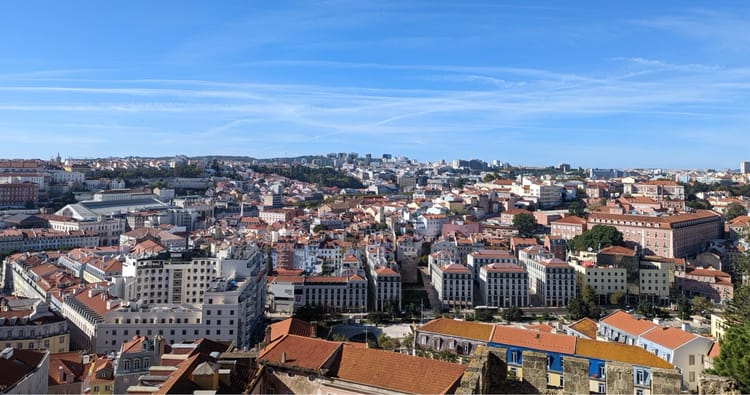Peru - A Spontaneous Adventure

A week after returning from Mexico City to attend a friend’s wedding, I decided on a whim to visit San Francisco Climate Week. When I left California in January this year, I did not expect to return so soon. I figured as long as I’m on the west coast I would go down to SoCal and visit friends in Los Angeles and San Diego. When the plane arrived at LAX however, staring at the characteristic sprawling city grid flooded me with mixed emotions and nostalgia about the life I deliberately chose to leave behind in Los Angeles. I thought about a parallel universe in which I never got laid off, ended a relationship and moved into my new lease in Venice. I reminded myself it’s best to let bygones be bygones; there is a whole world out there that is waiting to be discovered. Why dwell on a future that never came when I have the agency to write a different one? Los Angeles will always be here and I can come back when I am ready.
I took a deep breath, opened Google Flights, filtered on a few parameters and impulsively booked a one-way ticket to Lima departing later that day. I texted some understanding friends that I would in fact not be meeting up with them and instead going to South America. I found a hotel for the night and an Airbnb for 3 weeks. I leaned into the spontaneity and trusted myself to figure it out.
Settling In
The nine-hour flight to Lima was longer than I was accustomed to, but the views over San Diego, Baja California and the sunset view of the Pacific ocean were captivating. Not going to lie, the inner child in me was very excited as the in-flight map displayed us crossing the equator - I was in the Southern Hemisphere! Landing in Peru, the excitement of being in a new country hit me. To my dismay the immigration officer did not stamp my passport. I’m glad I improved my Spanish in Mexico - it helped navigate the herd of taxi drivers waiting outside. It was late but I definitely went to bed grinning that all it took was 5000 miles and 12 hours for me to fall asleep on the other side of the world.
The next day, I followed my usual first day routine: exploring the neighborhood, enjoying a delicious breakfast at a local café and finding a historical walking tour. I walked over to the seaside WeWork building which would be my office for the next 3 weeks and scoped out nearby gyms and restaurants. In the afternoon I met up with my walking tour group. After pleasantries and briefings, our guide escorted us on the crowded transit bus to the historic center. I learned that Lima was originally settled as Cuidad de Reyes or “City of Kings”. The architecture showed colonial Spanish influence - looking at the towering church I imagined what the Inca natives would have thought when they saw this for the first time over 500 years ago. I immersed myself in the crowd as our guide shared interesting facts and figures. Our four hour walking tour ended in the evening with a spontaneous dinner with some new friends and fellow travelers.
Life in Miraflores
Miraflores, meaning “see the flowers,” is a vibrant neighborhood on the seaside cliffs, popular with nomads and the expat community. The area is gentrified, with fancy cars, luxury condos, and high prices. Despite the higher number of foreigners, English was hard to come by. Local supermarkets, restaurants and events were a great opportunity to practice my Spanish as well.
I settled into a bit of a routine: wake up in the morning, walk or run to the seaside cliffs, grab a coffee and then get ready and head over to WeWork. I quickly learned not to trust driving time estimates in the Uber app or Google Maps - the 20 minute walk home from WeWork was faster than the advertised 10 minute driving time. Miraflores had a bikeshare program but I opted for walking, it enabled my curiosity to just stop and explore whenever I discovered a nice window shop or saw an interesting food menu. I quickly learned to exercise caution while crossing even the narrowest streets. Drivers only obeyed traffic lights on larger roads and not stop signs on smaller roads.
At WeWork, I made an effort to interact with the local office tenants and join hosted events or lunch outings at nearby restaurants. I really enjoyed the fresh seafood as well as these ubiquitous chifa and nikkei - Chinese and Japanese fusion restaurants. Peru has a sizeable Chinese and Japanese community and it was pretty cool to see the fusion of Asian techniques and Peruvian ingredients that reflected the surprising diversity of the country. Across the board, food quality was amazing in Miraflores but most plays had long wait times and poor service. Overall, I enjoyed the neighborhood and if I return to Lima for a longer stay in the future, I would totally come back here again, perhaps closer to the water and near the surfing schools.
Islas Ballestas Wildlife Tour
Due to the spontaneous nature of the trip, there was no concrete planning in place which meant there was a great deal of flexibility. I knew I would visit Cusco and Machu Picchu but pushed it to the following weekend so another friend from the US could join. Therefore, during the first weekend I went on a combined wildlife at sea and desert dunes tour south of Lima.
The predawn pickup was brutal but we drove down the Pacific Coast, south of Lima in relative comfort. The urban amalgamation eventually gave way to gentle rolling hills and as the sun rose, the blobs in the distance appeared to be vineyards. Another fun fact - Peru is a huge producer of grapes and fruits. The tour bus pulled into Paracas, a small yet packed seaside resort town. The stop here was brief - a quick coffee and pastry before hopping onto the main attraction: a small boat wildlife tour of the Islas Las Ballestas.
As our boat left the harbor and pushed past the peninsula and wildlife reserve, I saw a modern port with massive container ships and to my surprise a large US Coast Guard vessel. Later on I learned it was there as a part of preclearance security missions for cargo ships bound for the US - another sign of a globalized world.

Our boat chugged past the port and we encountered some playful sea lions on floating buoys to start the tour. Our small boat pushed through the fog and choppy waves for another 20 minutes before we arrived at one of the most beautiful islands I’ve ever seen. A wide, natural arch sheltered a flock of various birds, sea lions and nearby penguins. As the boat made a turn, amongst the abundant wildlife our guide pointed out a flock of baby Humboldt penguins jumping into the water to catch their food. We passed through more of these “guano islands”, once a significant source of income from their bird droppings used as fertilizer. Upon the conclusion of the boar tour, we fueled up at a rooftop restaurant and headed back to the tour bus.
Huacachina Oasis

Not far from Paracas, we rode the bus towards the city of Ica, nestled inland - separated from the Pacific Ocean by a small desert and vast sand dunes. A windy road that felt a little too small for our bus led to Huacachina, a small oasis surrounded by vast desert dunes. There were maybe 20 buildings in the whole village but it was crawling with tourists - foreigners and Peruvians alike. Upon arrival, we walked around the oasis and then grabbed snacks and pre ordered dinner at the Wild Rover, a pretty neat hostel complete with indoor courtyard and swimming pool. I launched my drone and got some breathtaking footage despite the high wind and weak GPS signal. From the drone footage it became apparent how tiny this spec of an oasis truly was in this vast desert. After dividing into smaller groups, we made the grueling march away from the oasis and up the dunes towards the dune buggies. It felt like forever walking uphill in the hot sand; as I came to the top to my pleasant surprise and relief some local women sold ice cold bottled water for 5 soles - it was worth every penny.
As I approached the dune buggy, I was very nervous - I don’t like rollercoasters or sudden jerky movements. These things were brightly colored and made of an assortment of parts and appeared more off-road capable than my Subaru. Our small group boarded and off we went - our driver was hilarious as he didn’t speak any English but I could tell he was having a great time based on his body language and little giggles he let out as the rest of us shrieked. Several hours went by as we roamed around the dunes; it was hands down one of the most amazing things I have done. I was out of my comfort zone, clutching my seat belt harness with one hand and my handheld camera in the other hand. We eventually stopped at the top of a large dune and the buggy driver whipped out sandboards for all of us. Initially I was hesitant but after seeing many others go, I also jumped on but used my legs to reduce the speed. The day in the dunes ended with a picture perfect sunset (in the north) before we returned to the bus for a four hour ride back to Lima.
Visiting the UTK School
One of the highlights of my trip was visiting a school affiliated with United Technologies for Kids, a program initiated by my friend Giuliana from college. The program supplements school learning with a co-located makerspace and various programs that facilitate young students all the way to college prep. Giuliana and I were both part of the optiMize Social Innovation program at Michigan and I always found her project inspirational and was excited to see it first-hand.
My friends and I crawled through the infamous Lima traffic in an Uber and met up with Giuliana’s father, Eduardo, who drove us to the school in La Molina. The school’s neighborhood, reminiscent of Beverly Hills with its large homes and clean streets, is nestled in a valley between the foothills of the mountains east of Lima. Climbing the hills it became clear just how expansive Lima was as I caught a rare clear view during the start of winter. Eduardo guided us through the maze of winding roads to the campus and through the security gates and up to the makerspace.
During the tour, we met students and instructors, explored the makerspace, and learned firsthand about the projects and long-term goals of the students. Eduardo had a ton of experience and knowledge in this space and our conversation turned into a wide-ranging discussion about the challenges of building and implementing this model in Peru and Latin America as a whole. I left the school feeling quite inspired and moved - programs like UTK support talented students with limited resources and give them a platform to succeed so they can impact their communities and the world.
An Abrupt Departure
Having postponed the highlight of my Peru trip, Machu Picchu, to the second weekend, I had finalized all the arrangements for Cusco, the Sacred Valley, and Machu Picchu. I planned to be completely unplugged from work to fully immerse myself in this long-anticipated visit to the Incan citadel perched in the clouds. However, I received devastating news about a friend’s passing. After speaking with his parents, I decided to honor his memory by continuing with my plans.
Just days later on Thursday afternoon, however, I got a call that my dad was in the hospital. At the time of writing thankfully he is doing well now and will be discharged soon. It was only 4 days ago but that Thursday was a blur; I couldn’t think straight and went into a checklist mode. Within 20 minutes of the news, I rebooked a red-eye flight back to the US, informed my friends and Airbnb host of my early departure, and instead of packing for Cusco I packed for departure. I canceled dinner plans with a group of local tour guides and informed my work colleagues of my absence.
Getting to the Lima airport felt like a race, again being stuck in the infamous traffic. I had to leave the taxi and walk the last 100 meters due to traffic. Inside, it was pure mayhem with the evening rush of international departures. The airport was a zoo but learning that my inbound plane was three hours behind schedule was the reassurance I needed. To be honest, I wasn’t present - following the herd of people through security and then immigration and finally into the terminal. I didn’t even go to the lounge, I found a seat by the gate and waited. Only when the plane started its takeoff roll that I felt a sense of relief and prepared to face whatever was happening at home.
As I sat at the gate, it dawned on me how much I was leaving behind. A 22 day trip became 12 days and I felt like I missed so much. I wish I had flown my drone more often or tried out a different restaurant or gone to one more meetup. Despite all the Cusco planning I would not be joining my friend who was flying in on the red eye to Peru. It felt surreal—six hours ago, I was packing for Machu Picchu and would now arrive in the US Friday morning instead of Cusco.
Family is paramount. Peru will always be there, giving me the motivation to return and explore areas like Cusco, the Sacred Valley, Arequipa, Colca Canyon, and Puno. My upcoming plans for Europe in early June will need reevaluation. While the pause in travel is disappointing, being present for my family is crucial. Flexibility and a nomadic lifestyle come with challenges, especially when things go wrong. In a pinch, it’s hard to get back as you just stare at the map and truly comprehend the distance between you and your loved ones. This reality check again emphasizes the importance of making the most of every situation and counting my blessings and revisiting the priorities in life.




